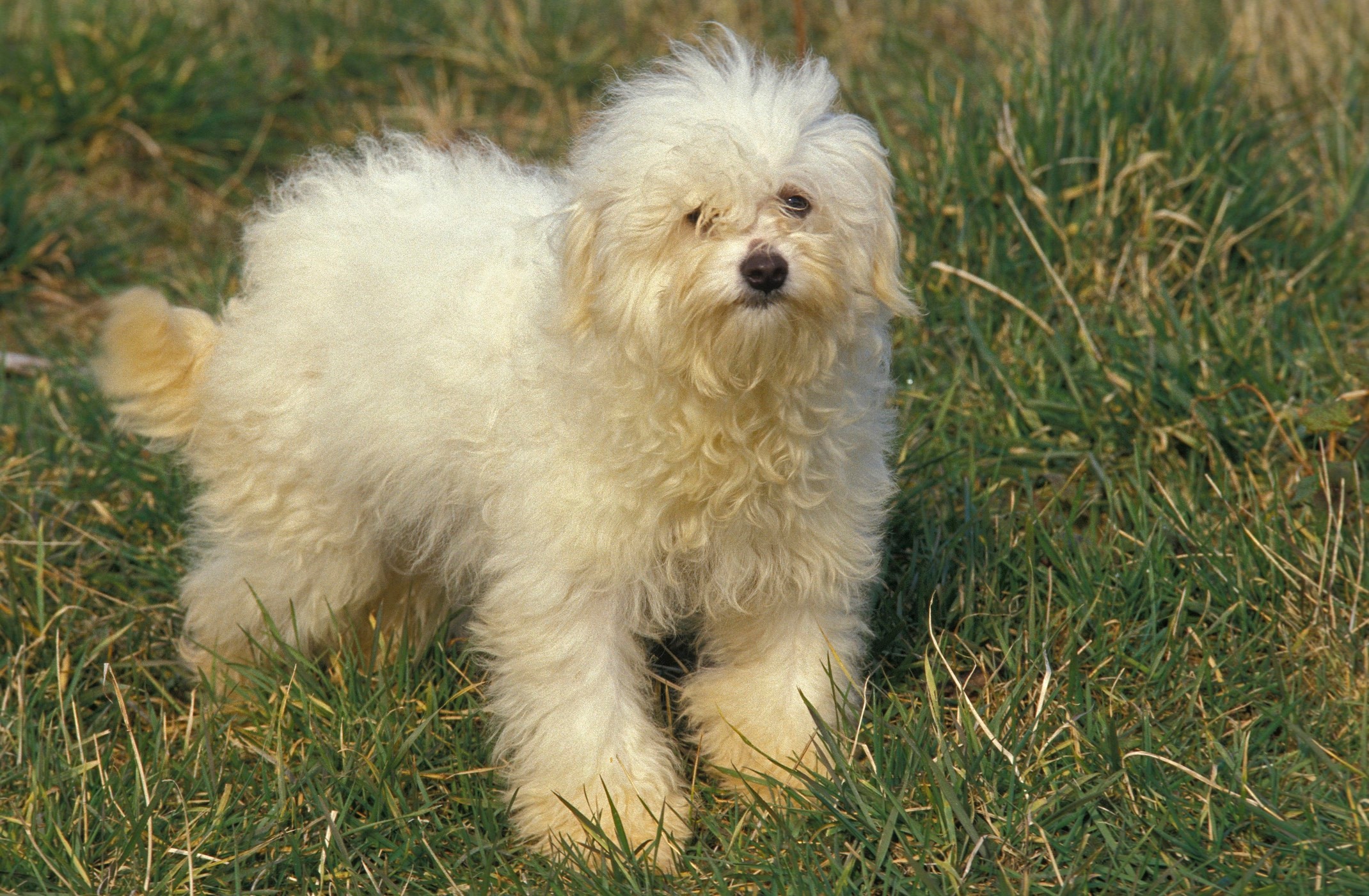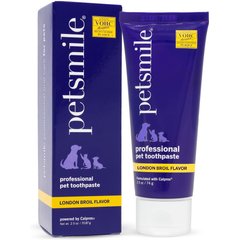Bolognese
Adobe Stock/Riccardo Zago/Wirestock
The Bolognese dog has been a loyal and treasured companion since the breed’s inception centuries ago. According to the American Bolognese Club, Italian nobility were a steward of the breed and these petite, fluffy dogs are frequently featured in Renaissance-period art.
Today, the breed is relatively rare but might look familiar: The Bolo, as the dogs are sometimes called, is related to other small white dogs with Mediterranean origins like the Maltese, Havanese, and Bichon Frise.
A full-grown Bolognese dog is 10–12 inches at the shoulder and weighs 6–10 pounds.
Caring for a Bolognese Dog
The Bolognese dog breed has been bred for centuries with companionship in mind, so it should come as no surprise that these dogs are known for being calm, loyal, and affectionate with their human family members. They have an easygoing personality and are not known to be high-maintenance, so Bolognese dogs make adept travelers and errand partners.
However, their grooming requires more diligence to keep their soft, wavy coat unmatted and looking its best.
Bolognese Health Issues

The Bolognese lifespan is typically 12–14 years, and the breed is known to be quite healthy with few major health problems. Health problems can still creep in, however, so keep up with regular wellness exams to keep your Bolognese healthy. The American Bolognese Club recommends that breeders screen their dogs for eye problems and patellar luxation.
Patellar Luxation
Bolognese dogs may experience a luxating patella, which is essentially a kneecap that slips out of place. Symptoms of a luxating patella include a bunny-hopping gait, limping, and a cracking sound when the knee is bent.
It’s a common condition for small-breed dogs, but you can mitigate the chance of encountering this health problem by asking a prospective Bolognese breeder for a certificate of clearance regarding patella issues.
Legg-Calve-Perthes Disease
Bolognese can also develop Legg-Calve-Perthes disease, a genetic condition that causes damage to the hip joints. Surgery is usually necessary to keep affected dogs comfortable, but after the procedure they should be able to be active and pain-free.
Dental Disease
Another common health condition in small breeds like the Bolognese is periodontal (dental) disease. This is when plaque and tartar build up on a dog’s teeth and cause issues from bad breath to painful tooth abscesses.
Pet parents should commit to brushing their dog’s teeth every day and scheduling professional dental cleanings as their veterinarian recommends.
Recommended Products
What To Feed a Bolognese
To meet your dog’s nutritional needs, choose from available high-quality commercial dog foods. Specifically, look for a diet that has been approved by the Association of American Feed Control Officials (AAFCO) and is appropriate for your dog’s life stage (puppy, adult, or senior).
How To Feed a Bolognese
Feed a full-grown Bolognese dog two meals a day, usually in the morning and evening. Bolognese puppies benefit from eating smaller, more frequent meals because of their increased nutritional needs during rapid growth and development and the risk of developing hypoglycemia (dangerously low blood sugar levels). With that in mind, you might feed your puppy three to four times per day.
How Much Should You Feed a Bolognese?
How much you feed your dog is based on factors unique to your Bolognese—such as age, weight, and activity level. Discuss your pet’s needs with your veterinarian, and adjust as needed to ensure your dog maintains a healthy weight and body condition.
Nutritional Tips for Bolognese Dogs
Because the Bolognese breed can be prone to patellar luxation, your veterinarian may recommend joint supplements for your dog. Glucosamine and chondroitin supplements help support healthy joints.
Never give your pup a supplement without speaking with your vet first.
Behavior and Training Tips for Bolognese Dogs
Bolognese dogs generally exhibit a balanced personality without tipping to extremes like being hyperactive or overly timid. The breed is known to be calm but alert, affectionate but reserved.
When well-socialized and trained, Bolognese dogs are adaptable companions for children and seniors. While they may not play for hours on end like some small dog breeds, they’ll be happy to have fun for awhile and then cuddle on just about any occasion. What’s most important to a Bolognese is that they have human companionship.
Bolognese Behavior
In contrast to some small-breed dogs that are known to be very vocal, the Bolognese dog personality is not especially talkative. However, Bolognese dogs are very alert and will not hesitate to bark at an unfamiliar sound or person.
The Bolognese is happy to show (and receive!) affection from members of the household, but the breed can be a bit shy around strangers if socialization isn’t part of their early training.
Bolognese Training
A Bolognese is intelligent and eager to please, which makes them relatively easy to train. The key is to understand what motivates your pet. The desire to please their pet parent can entice the Bolognese to learn new things, so focus on building a strong rapport and a healthy dynamic with your dog.
Always use positive reinforcement, and start socializing your Bolognese puppy as soon as you bring them home.
The Bolognese is happy to show (and receive!) affection from members of the household, but the breed can be a bit shy around strangers if socialization isn’t part of their early training.
Bolognese dogs that haven’t been given appropriate training and socialization can become overly fearful and anxious, which is uncharacteristic for the breed as a whole.
Fun Activities for Bolognese Dogs
-
Obedience training
-
Training for therapy work
-
Cuddling with their humans
Bolognese Dog Grooming Guide
The most identifiable mark of the Bolognese dog breed is the fluffy white coat. While there’s no completely hypoallergenic dog, the Bolognese’s low-shedding coat can be a good fit for some people with allergies. It’s long and wavy, with a tendency to flock together in tousled clumps all over the body.
Although the coat isn’t expected to look meticulous, plan to invest time in a regular grooming routine to prevent matting.
Skin Care
Bolognese dogs typically don’t have special skin care needs. An occasional bath when they get dirty or start to smell a bit is usually sufficient and minimizes the risk of dry skin.
In between baths, check your dog’s skin during grooming sessions to monitor for signs of excessive dryness or other changes. If something seems out of the ordinary, discuss it with your veterinarian.
Coat Care
To maintain a Bolo’s coat, plan to brush it at least every two or three days. Doing so will smooth snarls and remove dead hair, which prevents matting. Extra vigilance is required if you keep your dog’s fur long. Many pet parents find it easier to trim the coat to about a 1-inch length around the legs and body, leaving the hair around the head to preserve the characteristic tousled look of the breed.
To maintain a short Bolognese haircut, you’ll either need to have your dog professionally groomed about every six weeks, or invest in the tools and time required to learn how to groom your dog at home.
Eye Care
Like other dog breeds with white coats, the Bolognese is prone to tear staining. To prevent this, wipe the area around the eye twice a day with a tissue moistened with a dog-safe eye cleaner.
Other strategies for controlling tear stains include keeping the hair around the eyes trimmed short and giving your dog a supplement to reduce tear stains. Talk to your veterinarian if tear staining is an issue.
Recommended Products
Ear Care
Because the Bolognese dog’s ears are floppy and covered in long hair, it’s important to regularly inspect the inside of the ear for signs of infection, like redness, odor, or discharge. If long hairs are growing inside the ear canal, these should be plucked.
Clean your dog’s ears about once a month (or more often if needed or advised by your vet) to remove debris and avoid a buildup of ear wax. Always use a vet-recommended ear cleaning solution—never a human-grade cleaner or essential oil like tea tree oil, which can be very dangerous for your dog.
Considerations for Pet Parents
The Bolognese has been a loyal companion for centuries. If you’re thinking about adding this small, healthy dog breed to your family, you can look forward to a close bond that will last for many years.
These dogs thrive in a home where they can have consistent company with humans. Although they are fine when properly trained and left alone for short stretches at a time, they don’t like to be isolated for many hours.
The breed’s low-key reputation is a tempting reason to bring home a Bolognese puppy, but it’s important to remember that hard work and consistency are involved in caring and training for a dog. Pet parents should think about the ongoing expenses of caring for a pet and whether they can commit to the frequent care requirements of the Bolognese coat, including near-daily brushing and vigilance to remove tear stains.
Bolognese FAQs
Do Bolognese dogs bark a lot?
Bolognese dogs do not typically bark excessively out of boredom or for attention, but the breed will not hesitate to bark at unfamiliar sights and sounds. Proper training can help keep barking to a minimum.
Is a Bolognese dog rare?
Although the breed’s history stretches back centuries, Bolognese dogs are still relatively rare, especially in the United States. If you can’t find a puppy from a reputable breeder, consider bringing home an adolescent or adult dog from a Bolognese rescue. These organizations might have Bolognese dogs for adoption.
What is the life expectancy of a Bolognese dog?
The life expectancy of a Bolognese dog is 12–14 years. The breed is considered generally healthy and not prone to serious genetic problems. With proper care and nutrition, you are likely to enjoy many years of companionship with your pet.
Are Bolognese dogs good with other dogs?
The adaptable nature of the Bolognese breed means they are typically good with other dogs. Make sure they have been properly socialized from an early age to interact with other dogs in both familiar and unfamiliar surroundings.



